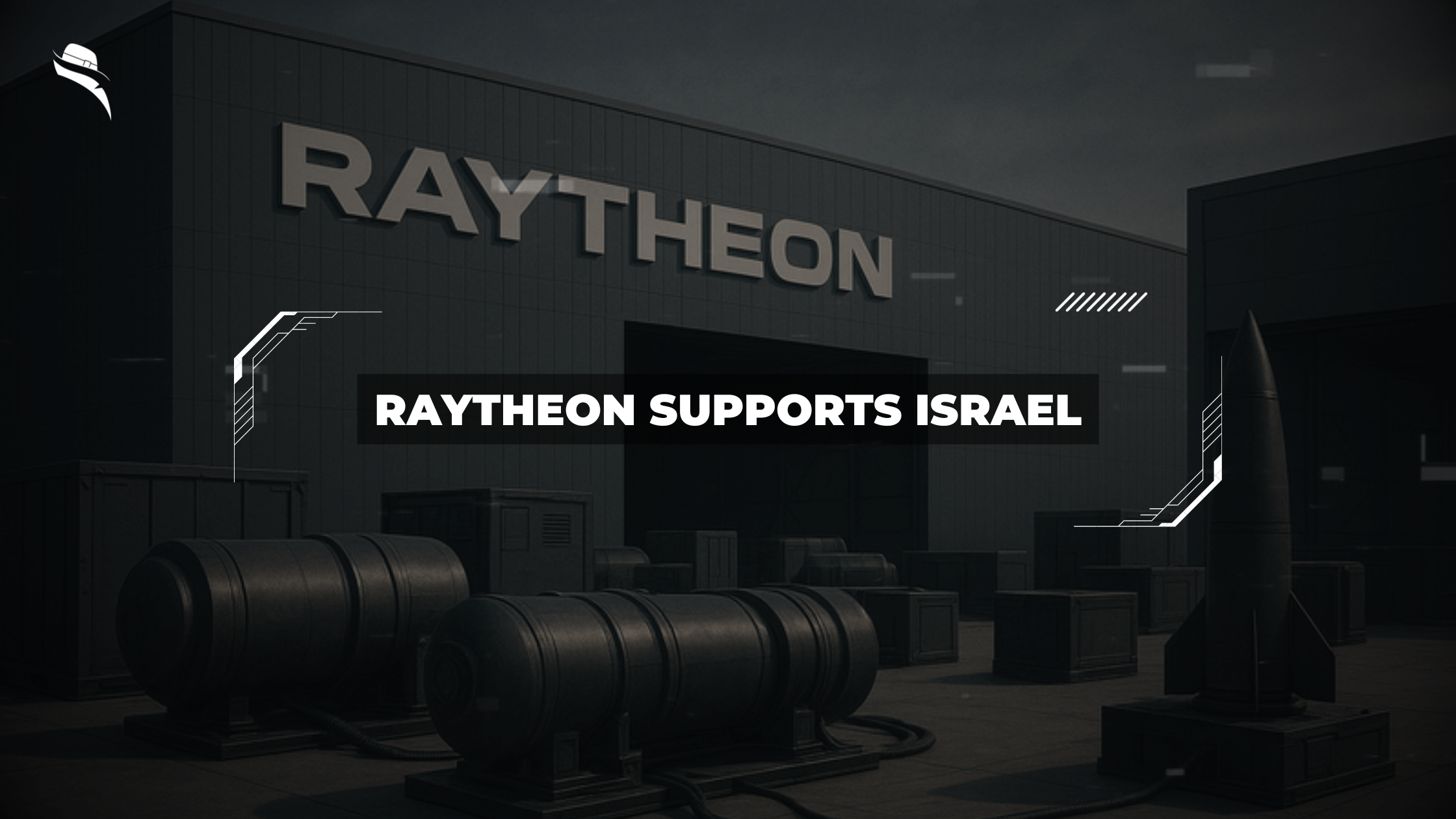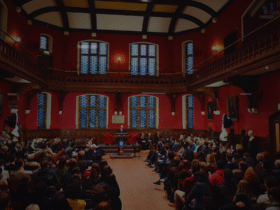The United States has contributed significantly to this defense system, providing approximately $1.6 billion in funding between 2011 and 2021. Furthermore, Raytheon and Rafael Advanced Defence Systems have formed a joint venture called RS2 to expand production of the Iron Dome, specifically constructing a new factory in Arkansas to manufacture the Tamir interceptor missile and its SkyHunter variant. Each Iron Dome battery costs around $50 million, while individual interceptions range from $100,000 to $150,000, though some sources indicate the Tamir interceptor itself may cost as little as $40,000 per missile.
This article explores the development of Israel’s Iron Dome system, its technical capabilities, Raytheon’s involvement in its production and deployment, and the controversies surrounding this military partnership. By examining both the defensive technology and its implications, readers will gain a comprehensive understanding of how this system functions and its role in regional conflicts.
The Origins of Israel’s Iron Dome System
The 2006 Lebanon War marked a turning point in Israel’s approach to homeland defense. During this conflict, Hezbollah launched approximately 4,000 rockets into northern Israel, resulting in 44 civilian deaths and widespread property damage. This barrage of attacks exposed a critical vulnerability in Israel’s defensive capabilities—the lack of an effective short-range rocket interceptor system.
The 2006 Lebanon War and the need for missile defense
Following the war, Israeli defense officials recognized the urgent need for a solution to counter the growing threat of short-range rockets fired from Gaza and Lebanon. In 2007, Brigadier General Daniel Gold, then head of the Israeli Defense Ministry’s Research and Development directorate, made a pivotal decision to initiate the Iron Dome project despite lacking official government approval. This bold move later earned him the Israel Defense Prize for his foresight.
Initial development by Rafael and Israel Aerospace Industries
The actual development of Iron Dome began when Rafael Advanced Defense Systems took the lead role in creating this innovative defense system. Working in collaboration with Israel Aerospace Industries, the team designed a multi-tier defensive shield capable of intercepting rockets with ranges between 4 and 70 kilometers. The system was engineered to be mobile, allowing for flexible deployment across various threat zones. Additionally, the developers incorporated advanced discrimination capabilities that enable the system to calculate a rocket’s trajectory and determine whether it poses a threat to populated areas.
Early skepticism and eventual political support
Initially, the Iron Dome project faced considerable skepticism from military officials and politicians who questioned its feasibility and cost-effectiveness. Many defense experts favored investments in offensive capabilities rather than defensive systems. Nevertheless, as rocket attacks from Gaza intensified, political support gradually solidified. The project gained momentum when Defense Minister Amir Peretz championed the system in 2007, ultimately securing the necessary funding and governmental backing. Despite early technical challenges and budget constraints, the system progressed rapidly from concept to operational status in less than four years.
How the Iron Dome Works: Components and Capabilities
The Iron Dome defense system operates through a sophisticated three-part architecture that forms the backbone of Israel’s short-range missile protection. This first-of-its-kind defense system has achieved remarkable success, intercepting more than 1,500 incoming targets with a success rate exceeding 90% since 2011.
Detection and tracking radar
At the foundation of Iron Dome is the EL/M-2084 radar developed by Elta, a subsidiary of Israel Aerospace Industries. This advanced radar system detects incoming threats at ranges of 4-70 kilometers and provides 360° coverage. The radar can track multiple threats simultaneously, detecting projectiles within 2.5 seconds of launch.
Battle management and control system
Developed by mPrest Systems for Rafael, the BMC serves as the system’s brain. Upon detecting a threat, it rapidly calculates the rocket’s trajectory and anticipated impact point. Importantly, the system is designed to ignore incoming threats determined to land in uninhabited areas, thereby conserving interceptor missiles and reducing operational costs.
Tamir interceptor missile
The Tamir missile is the system’s primary countermeasure. Each missile features electro-optical sensors and multiple steering fins for high maneuverability. These interceptors can reach speeds of Mach 2.2 and activate their proximity fuse warheads within 10 meters of targets. Essentially, each launcher can fire all 20 of its interceptors within ten seconds.
Comparison to traditional missile batteries
Unlike conventional air defense systems, where components are co-located, Iron Dome utilizes a scattered deployment pattern. Each launcher operates independently via secure wireless connections. Moreover, compared to systems like NASAMS, whose interceptors cost approximately $1 million each, the Tamir missile costs between $40,000-$50,000.
Coverage area and deployment flexibility
Each Iron Dome battery can defend an urban area of approximately 60 square miles. The system’s mobility allows strategic positioning around population centers, creating overlapping protection zones. Additionally, Iron Dome operates effectively in all weather conditions, including low clouds, rain, dust storms, and fog.
Raytheon’s Role in Iron Dome and U.S. Co-Production
In 2014, U.S. defense giant Raytheon Technologies forged a crucial partnership with Rafael Advanced Defense Systems to enhance Iron Dome production. This collaboration culminated in the establishment of Raytheon RAFAEL Area Protection Systems (RS2), a formal joint venture announced in 2020, focused on missile defense technology sharing.
Raytheon and Rafael joint venture
The RS2 partnership represents a strategic alignment of American manufacturing capabilities with Israeli innovation, allowing both nations to benefit from shared expertise in countering short-range threats.
U.S. funding and technology transfer
American support extends beyond financial backing, with comprehensive technology transfer agreements enabling domestic production of system components. This arrangement has facilitated knowledge exchange while maintaining Israel’s security interests.
SkyHunter: the U.S. variant of Iron Dome
Raytheon developed SkyHunter as the American adaptation of the Tamir interceptor, designed to integrate with U.S. military systems while maintaining the core capabilities of the original missile.
Production facilities in Arkansas and Arizona
Manufacturing operations span multiple states, with specialized facilities in both Arkansas and Arizona producing critical components for both the original Iron Dome and its American variants.
Export potential and U.S. military use
The U.S. Army has acquired two Iron Dome batteries for evaluation, considering them for interim cruise missile defense. Meanwhile, both countries explore export opportunities to allied nations seeking similar defensive capabilities.
Deployment, Effectiveness, and Controversies
“”Our focus right now is how do we support the Israeli Defense Force? How do we make sure that they have what they need to be able to defend their country.”” — Gregory J. Hayes, Chairman and CEO, RTX Corporation (Raytheon Technologies)
Iron Dome batteries were first deployed operationally in March 2011 near Beersheba, with the system recording its first successful interception of a Gaza-launched rocket in April 2011. Over the following years, Israel expanded its defensive shield to ten batteries by 2021, each capable of defending approximately 60 square miles of territory.
Deployment history from 2011 to 2024
From 2011 to 2024, the system has intercepted thousands of projectiles across multiple conflicts. During Operation Pillar of Defense in 2012, Iron Dome intercepted 85% of targeted rockets. Subsequently, technical refinements improved this success rate to over 90% during the 2014 Gaza War. In October 2023, however, Hamas launched approximately 2,200 rockets in just 20 minutes, overwhelming the system’s capabilities.
Success rate and cost per interception
Each Tamir interceptor missile costs between $40,000 and $100,000, making mass interceptions financially significant. By comparison, Hamas rockets cost merely $500-$600 each to produce. Nonetheless, Israel calculates that these costs are justified by preventing approximately $1 billion in indirect economic losses that occurred during the 2014 conflict.
Limitations during mass rocket attacks
The system’s primary limitation became evident during coordinated mass barrages. While effective against smaller salvos, Iron Dome faces challenges when confronting Hezbollah’s estimated arsenal of 150,000 rockets or scenarios involving 1,000-1,500 projectiles fired daily.
Civilian protection vs. military strategy
Ironically, Iron Dome’s effectiveness has created strategic complications. As one Israeli policymaker noted, “When Iron Dome works so well and so few Israelis die, Israel loses the justification for the operation”. This protection has allowed Israeli leaders more deliberation time during conflicts rather than rushing to a conclusion.
Criticism: Raytheon’s complicity in Gaza war crimes
In October 2023, Raytheon executives spoke candidly about how Israel’s war would boost business, with CEO Greg Hayes stating, “across the entire Raytheon portfolio, you’re going to see a benefit of this restocking”. Critics argue this represents profiting from conflict, as Raytheon’s stock increased more than 10% following the October 7 attack.
Companies like Raytheon are complicit in war crimes and humanitarian crises. Learn more about other weapon manufacturers fueling global conflict and why boycotting their shares is a stand for justice and ethical living.
Final Thoughts
Israel’s multi-layered missile defense systems face significant challenges despite their technological sophistication. Although effective against isolated attacks, these systems struggle with high-intensity barrages that can cause radar saturation, system overload, and exploitable blind spots. These technical limitations became evident during the October 2024 missile attack, which, although successfully intercepted in part, revealed critical gaps in defense against hypersonic missiles and coordinated, large-scale assaults.
The integration of external support, particularly from the U.S. Aegis system, provides crucial reinforcement for long-range ballistic threats. Yet, the future of Israeli missile defense clearly hinges on continued innovation, as evidenced by the development of the Iron Beam laser system—potentially offering more cost-effective and continuous protection.
Beyond technical aspects, the Iron Dome has profoundly impacted Israeli military doctrine, shifting from a primarily offensive tactical approach to a more balanced defensive posture. This strategic evolution has broad implications for Israeli-Palestinian relations, as effective missile defense could potentially facilitate territorial concessions without compromising security considerations.
Interest in the Iron Dome system extends globally, with several countries expressing acquisition interest. As adversaries develop increasingly sophisticated weapons, Israel’s ability to adapt through technological advancement and strategic foresight remains essential for maintaining defensive superiority in an ever-evolving threat landscape.
FAQs
1. How does Raytheon support Israel?
Raytheon supports Israel by co-producing the Iron Dome missile defense system, including the Tamir interceptor missile and its SkyHunter variant. The company provides manufacturing expertise, technology transfer, and U.S.-based production facilities, enabling Israel to defend against short-range rocket attacks.
2. What is the Iron Dome system, and why is it important?
The Iron Dome is Israel’s short-range missile defense system capable of intercepting rockets, artillery shells, and mortars. Operational since 2011, it has achieved a success rate of over 90% against projectiles targeting populated areas, preventing civilian casualties and protecting critical infrastructure.
3. What role does the U.S. play in Israel’s Iron Dome system?
The United States has contributed approximately $1.6 billion in funding (2011–2021) and supports co-production through Raytheon. This includes joint ventures, technology transfer agreements, and the establishment of manufacturing facilities in Arkansas and Arizona.
4. What is Raytheon RAFAEL Area Protection Systems (RS2)?
RS2 is a joint venture between Raytheon and Rafael Advanced Defense Systems, created to enhance production of the Iron Dome system. It facilitates shared expertise, mass production of Tamir missiles, and development of U.S. variants like the SkyHunter interceptor.
5. How much does an Iron Dome battery and interceptor cost?
Each Iron Dome battery costs approximately $50 million. Individual Tamir interceptor missiles range from $40,000 to $150,000, depending on sources, making defensive operations expensive compared to the low-cost rockets fired by adversaries.
6. How effective is Iron Dome in intercepting rockets?
Since 2011, Iron Dome has intercepted more than 1,500 rockets with an over 90% success rate in targeted areas. However, the system can be overwhelmed during mass rocket attacks, such as the 2,200 rockets fired by Hamas in 20 minutes during October 2023.
7. What are the technical components of Iron Dome?
The system consists of:
-
Detection Radar (EL/M-2084): Tracks incoming threats.
-
Battle Management & Control System (BMC): Calculates trajectories and prioritizes threats.
-
Tamir Interceptor Missile: Neutralizes rockets before reaching populated areas.
8. Has Raytheon faced criticism regarding its support for Israel?
Yes. Critics argue that Raytheon profits from conflict, as evidenced by stock increases following major attacks. The company has also been accused of being complicit in humanitarian crises due to its role in supplying Israel’s defensive systems used during conflict.
9. Does the U.S. use Iron Dome technology?
Yes. The U.S. Army has acquired Iron Dome batteries for evaluation and potential deployment, including the SkyHunter variant designed for integration with American military systems.
10. What is the global significance of Raytheon’s involvement in Iron Dome?
Raytheon’s co-production allows Israel to maintain advanced missile defense while creating potential export opportunities. It also demonstrates the collaboration between the U.S. defense industry and Israeli innovation, highlighting how technology transfer can influence regional security dynamics.






Leave a Reply